How to Optimize Line Spacing in WordPress for Improved Readability and User Engagement

Line spacing, or line height, is critical in web design, particularly on text-heavy websites. Although it may seem like a small detail, proper line spacing significantly enhances the readability of your content and improves the overall user experience. This guide will explain why line spacing is essential and walk you through various methods to adjust it in WordPress, providing examples to ensure you get the best results.

Why is Line Spacing So Important?
Line spacing directly affects the visual presentation of your website’s text and, in turn, your users’ experience. Here are a few reasons why it’s essential:
- Improved Readability: If your text is tightly spaced, readers need help to follow along, leading to eye strain and frustration. On the other hand, excessive spacing can make it easier for users to maintain focus. The right balance improves the flow of your content, making it easier to read and absorb.
- Better Aesthetics: A well-spaced website looks cleaner and more professional. For example, a blog with proper spacing between lines and sections feels more inviting and organized than cluttered, hard-to-read text blocks.
- Influencing User Engagement: User engagement is often linked to readability. If visitors find your content difficult to follow, they are likely to bounce off your site quickly. Proper line spacing increases users’ chances of staying longer, consuming more of your content, and interacting with your website.
Example: In an ideal world, users read content carefully, reflecting before clicking links. In reality, they skim for something clickable, often hitting the back button if it’s not what they want. Clear, well-spaced content helps users find what they need, while cluttered text leads to frustration and higher bounce rates.

Suppose you want to learn more about optimizing your website’s user experience through line spacing. In that case, it is recommended that you read some materials on web readability and user experience design, such as Don’t Make Me Think, a book that provides many helpful design tips.
How to Adjust Line Spacing in WordPress
Depending on your needs and preferences, WordPress offers several ways to adjust line spacing, from built-in editors to custom coding and plugins. Here are the most common methods, each with examples to guide you.
1、Adjusting Line Spacing in Gutenberg Editor
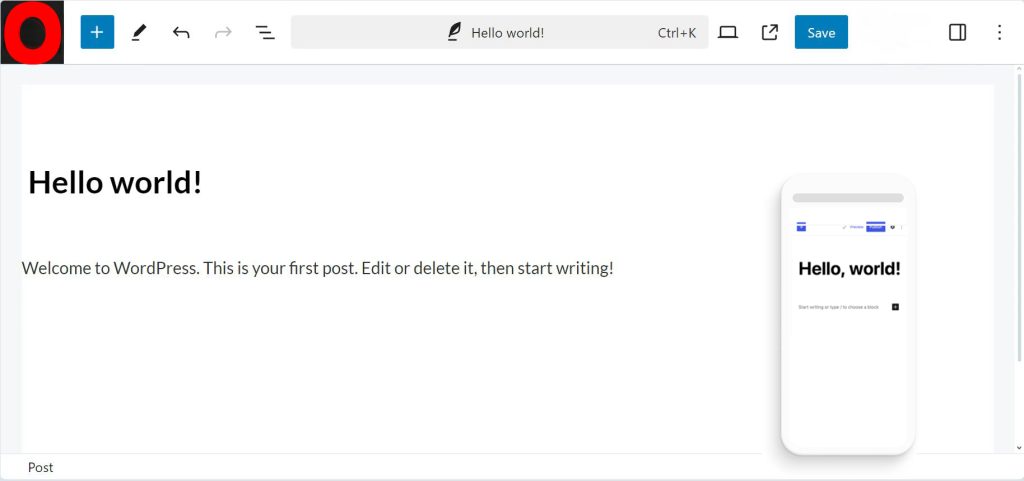
WordPress’s default block editor, Gutenberg, provides some essential control over line spacing. If you’re using the Gutenberg editor, follow these steps to adjust line-height:
Steps:
- Select the Paragraph: Open the WordPress page or post you want to edit, and click on the paragraph block requiring spacing adjustment.
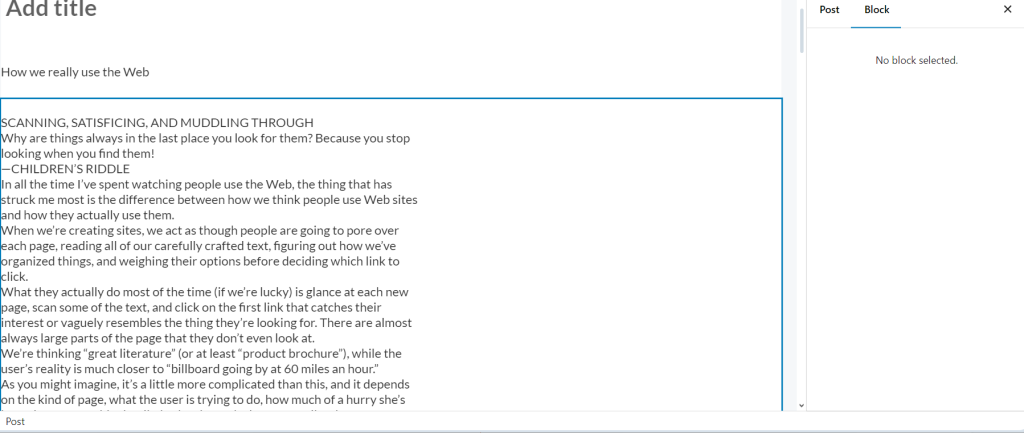
- Find Typography Settings: In the right-hand settings panel, locate the “Typography” section.
- Adjust Line Height: Under the typography settings, you will find an option for “Line Height.” You can increase or decrease the spacing by adjusting the numeric value or entering a custom number.
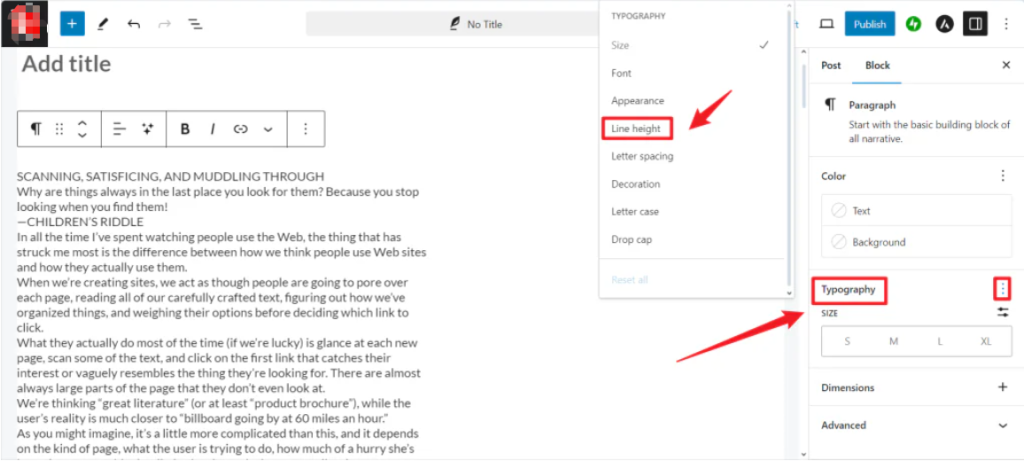
Example: Suppose you have a block of text that is too tightly spaced, making it hard to read. If the default line height is 1.4, increasing it to 1.8 or 2.0 will provide more breathing room between lines, improving readability.
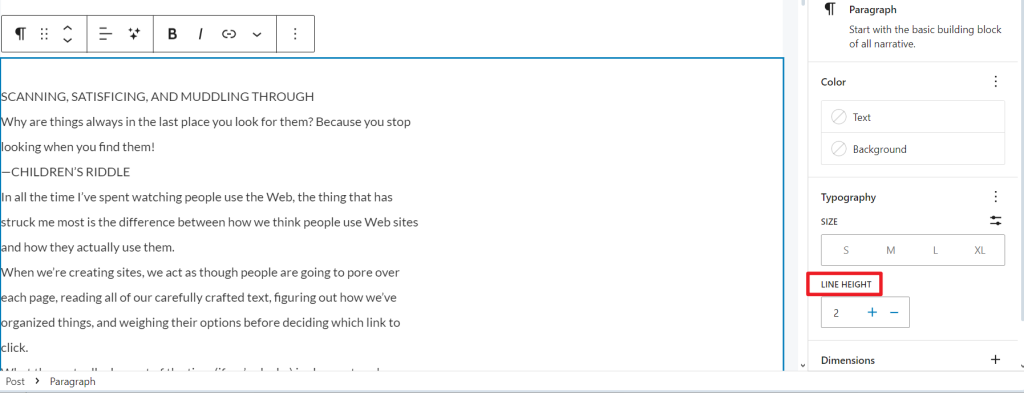
This is an easy method for adjusting line spacing for individual paragraphs or text blocks. However, custom CSS may be more effective if you require more precise control or need to adjust spacing site-wide.
2、Adjusting Line Spacing Using Custom HTML in Gutenberg
You can add custom inline CSS in Gutenberg for more precise control over individual paragraphs or elements.
Steps:
- Switch to Code Mode: Select the block you want to edit and click on the three-dot menu in the block toolbar. Select “Edit as HTML” to switch to code view.

- Add Line Height Code: Modify the
<p>tag (or whichever HTML tag you use) by adding a line-height property. For instance:
<p style="line-height: 1.8em;">This is a paragraph with increased line spacing.</p>Example: Let’s say your website uses a formal tone, and you want each paragraph in an article to have a slightly wider spacing for readability. Using the above method, you can set the line spacing for individual paragraphs to 1.8 em, which makes it easier for users to digest long pieces of text.
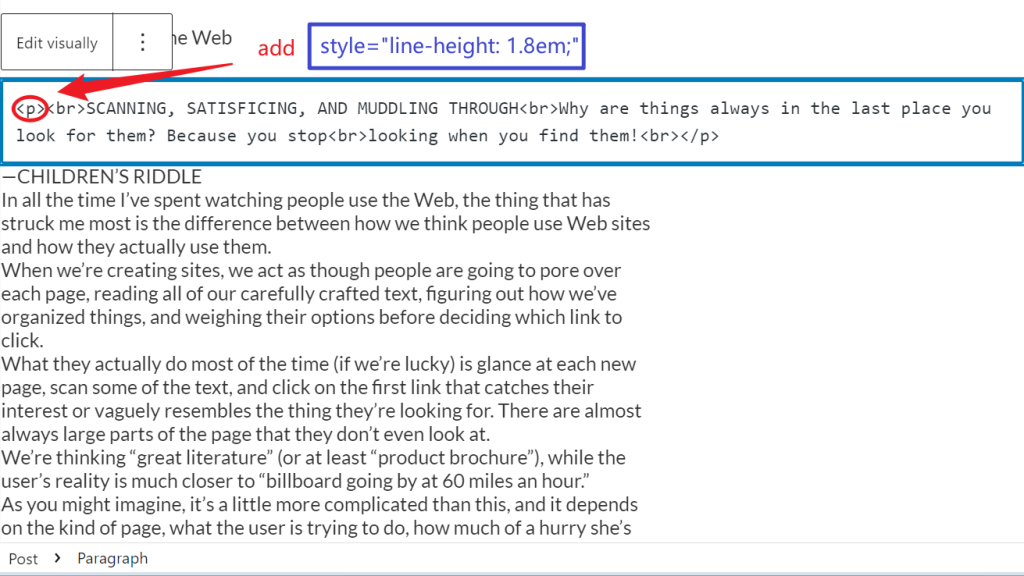

This block contains unexpected or invalid content. Select Convert to Classic Block.

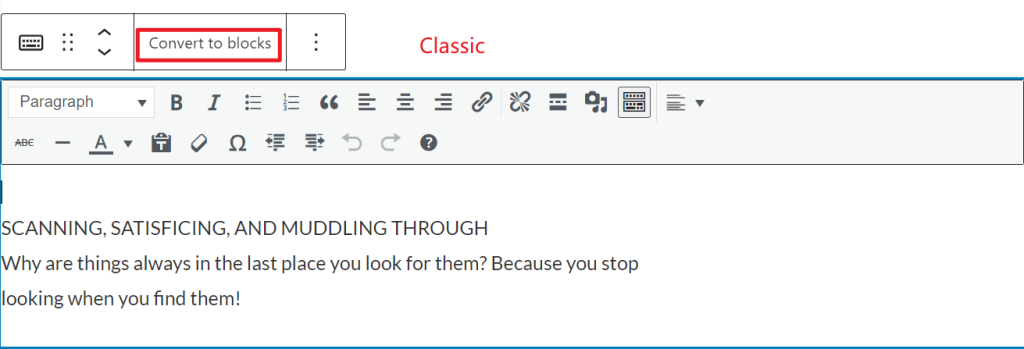
This method offers flexibility, allowing you to fine-tune the line height for specific text blocks or elements.
3、Adjusting Line Spacing in the Classic Editor
If you’re still using the Classic Editor, WordPress allows you to adjust line spacing in both the visual editor and HTML code.
- Using the Format Dropdown:
- Highlight the paragraph you want to change.
- In the toolbar, look for a dropdown menu labelled “Format.” Depending on your theme, there may be preset line heights like 1.5, 2.0, etc.
Example: If your theme allows it, you can set the entire body of your text to have a uniform line height of 1.6 or 1.8. This is useful for blogs or long-form content, ensuring that every article has consistent spacing.
- Using the Text Editor (HTML View):
- Click the “Text” tab in the Classic Editor to switch to HTML view.
- Add inline CSS directly to the HTML of the paragraph:
<p style=" line-height: 1.7;">This paragraph will have a line-height 1.7.</p>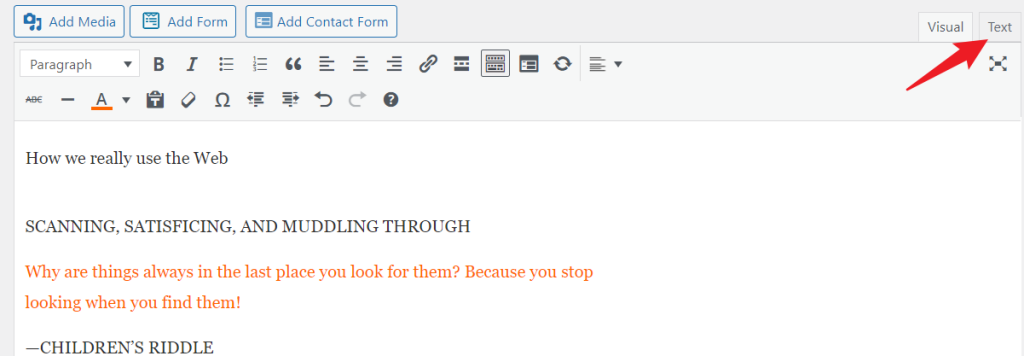
Example: For those looking for more control in sections with long paragraphs or bullet points, manually setting the line spacing with HTML allows you to customize specific parts of your page while leaving other elements untouched.
4、Adjusting Line Spacing Through the Theme Customizer
Many WordPress themes provide line spacing controls directly through the Theme Customizer. This method is ideal for applying consistent line spacing across your entire site without modifying individual posts or pages.
Steps:
- Open the Theme Customizer: From the WordPress dashboard, navigate to Appearance > Customize.

- Find Typography Settings: Depending on your theme, a section will be labelled “Typography” or “Global Styles.” In this section, look for an option to adjust the line height.

- Adjust Line Height Globally: Some themes offer a slider or input box where you can set the line height for various text elements, such as body text, headers, and even blockquotes.
Example: Let’s say you use a theme like Astra or GeneratePress, which offers detailed typography controls. Set the global line height for body text to 1.6 and increase the line height for headings to 1.2. This would give your site a balanced, readable layout with tighter heading spacing and more relaxed body text spacing.
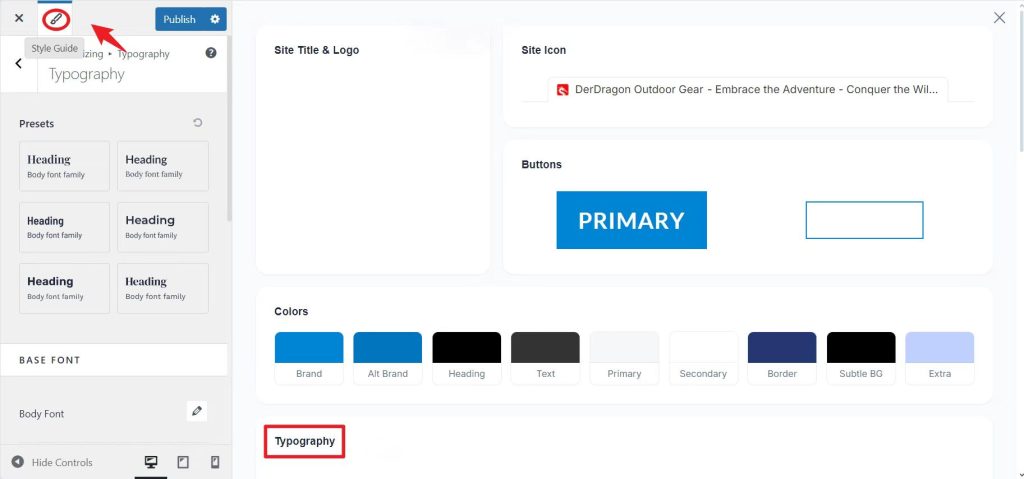
Alternatively, if your theme does not provide these controls, you can use the “Additional CSS” section to add global CSS rules, such as manually
p {
line-height: 1.6;
}
This ensures that every paragraph across your site maintains consistent, readable line spacing.
5、Using WordPress Plugins to Adjust Line Spacing
If you prefer a more visual method and want to avoid custom coding, WordPress plugins can help you easily manage line spacing and other layout elements.
One such plugin is Spacer, which allows you to control the space between elements by adding blank blocks.
Steps:
- Install the Spacer Plugin: From the dashboard, go to Plugins > Add New Plugin, search for “Spacer,” install, and activate it.

- Add Spacer Blocks in Gutenberg: In the Gutenberg editor, click the “+” icon to add a block, search for “Spacer,” and drag it between paragraphs, images, or other elements.
- Adjust Spacer Height: Once the Spacer block is added, use the drag handles to adjust its height or input a specific value in the block settings.
Example: Suppose you’re designing a landing page and want more breathing room between sections like headlines, images, and text. Inserting Spacer blocks allows you to visually adjust the spacing without touching any code.
Conclusion
Adjusting line spacing in WordPress is crucial for enhancing readability, aesthetics, and user engagement. Proper line spacing ensures your text is easy to read and visually appealing. WordPress offers multiple methods to adjust line spacing, including using the Gutenberg editor, custom HTML, the Classic Editor, the Theme Customizer, and plugins like Spacer. Each technique provides flexibility depending on your needs, from fine-tuning individual text blocks to applying site-wide adjustments. By optimizing line spacing, you create a more enjoyable and engaging reading experience for your website visitors.

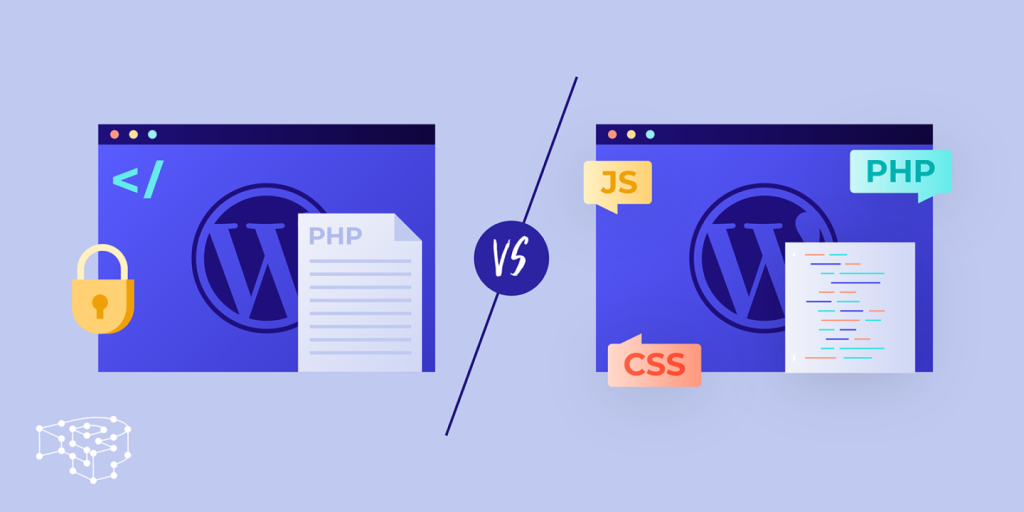





Responses